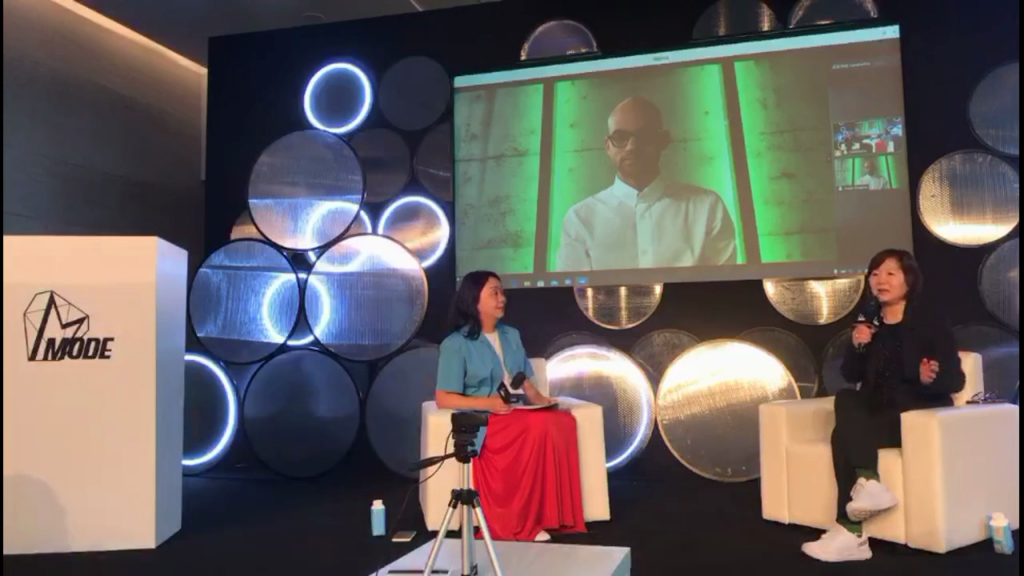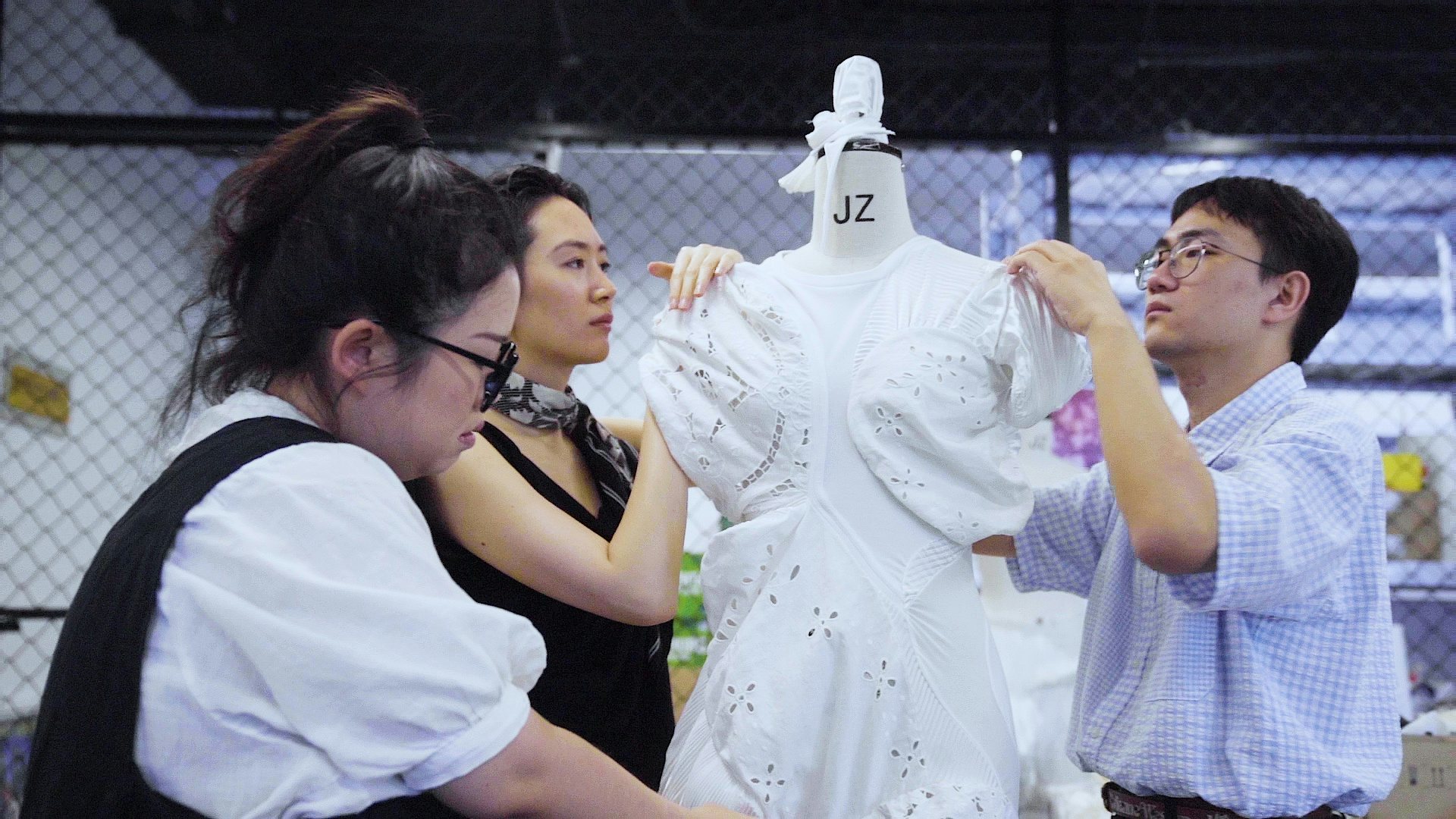Takeaways#
:
- Chinese consumers born post-90s or 00s are not the key consumers for sustainability products since they have less awareness compared to post-80s, and few of them are financially independent, a survey by Shanghai's R.I.S.E. Lab says.
- Despite an interest in sustainable luxury fashion, young consumers find it hard to accept high price points for sustainable products.
- China’s fashion industry may have more power in addressing the sustainability issue since the country is home to many industry chains, from raw materials to distribution.
When Cheng Yingting was teaching a fashion ethics workshop in France three years ago, she held a full day of discussion on fashion’s role in sustainability and even watched the landmark 2015 fashion documentary film True Cost, which is focused on the unsustainable garments industry behind fast fashion. Yet, as she finished lecturing, she overheard two students in the front row planning to shop later at a fast-fashion chain.
Cheng, who’s now the COO of Istituto Marangoni China, reflected on this and said, “We have been talking about sustainability, and we believe that our students and the public want to improve the environment. But does awareness necessarily mean action?”
Sustainability has been a buzzword in fashion over the past few years that can be found everywhere from the green-focused Copenhagen Fashion Week to industry-wide initiatives like The Fashion Pact. But despite these ambitious goals, there is usually a disconnect between companies and the individual consumers they serve.
But as ongoing climate disasters like the California wildfires and flooding in Southern China bring the sustainability discussion more to the fore, every link on the fashion ecosystem chain should be focused on the universal goal within the Paris Agreement for combating climate change. To better understand the issues, Jing Daily discusses the current sustainability disconnect — on both corporate and individual levels — with frontline experts and how the industry should adjust.
Consumers have limitations in sustainable options#
Just like anywhere else in the world, Chinese consumer awareness ranks higher than their actions when it comes to sustainability. In the report “Chinese Consumers of Sustainable Fashion in a Post-COVID-19 Era” by R.I.S.E. Lab, which was released during the just-passed Shanghai Fashion Week, 71 percent of respondents said: “I hope to purchase sustainable products to offset my negative impact on climate change.” Yet, of all the respondents, only 29 percent of them have made such purchases.
But all the responsibility shouldn’t be placed on consumers’ wallets, says Shaway Yeh, founder of the creative sustainability consulting agency Yehyehyeh. “Consumers are people, and people are complicated,” she explains. “I could believe in the principle of sustainability, and I would love to support such companies and try my best to spend. But at the same time, I also appreciate beautiful things. Unfortunately, the most beautiful things in the world right now are not equal to sustainability.”

“This is what we at Yehyehyeh would like to address,” Yeh states. “We hope that all the things that make you want to purchase were made in line with sustainability principles, so that [consumers] wouldn’t be conflicted.”
Young consumers find it hard to accept high price points for sustainable products, says Cheng from Marangoni China. She gave an example of how many young consumers, like her students, prefer the design and principles of Stella McCartney but cannot afford the brand. “For them, price is one of the bottlenecks of their purchase behavior. There are many fast-producing players in China’s fashion and retail space, and the low price points they offer are also leading consumers on,” Cheng adds.
The new R.I.S.E. report also says that Chinese consumers born post-90s or 00s are not the key consumers for sustainability products since they have less awareness, and few of them are financially independent. That might contradict common industry understanding that younger generations are the largest source of spending.

The industry holds key to education, supply, and change#
In a way, the career trajectory of Karen Du, the head of R.I.S.E. Lab, is shaped by the industry’s disconnect, as she’s had a decade-long career in the cosmetics arena (she was formerly in charge of branding and sustainability for an international cosmetics company.) “On one hand, I held a large media placements budget to encourage consumption, and I’d always try to persuade women that they need one more lipstick,” she explains. “On the other hand, I was doing work that’s relevant to sustainability.” She found herself chasing contradicting goals, but she wanted that to change.
In the spirit of transparency, fashion companies like OTB Group revealed some of the industry’s inner conflicts to us. “Sustainability requires time to implement actions,” said Sara Mariani, OTB’s chief sustainability officer. “Business runs fast, and sustainability works transversally in organizations, while business objectives are usually given vertically.” The Italy-based group owns Diesel, Maison Margiela, and Marni, all of which are popular in China.
In the case of OTB, Mariani stresses the group’s technical difficulties are “unrelated to the brands’ will and efforts.” As an example, she states how single-use plastic is proving hard to phase out from the packaging. “Existing technology has not yet evolved enough to provide reliable alternatives that are in line with the requirements of fashion on resistance to temperatures or longer stock lifespans,” she says.
According to Du, China has its unique problems. “When I was in talks with countries in Europe that are active in their sustainability efforts, I realized that we are facing different situations in China,” she adds. “Because, on the industry level, China owns a long and resourceful industry chain, whereas European countries rarely have production lines.” In other words, China’s sustainability focus is more on the logistics behind the luxury house.
Yeh, who also serves as a special adviser to Copenhagen Fashion Summit, agrees that companies’ efforts are necessary for giving consumers the sustainable options they want. “If consumers decide to have a sustainable lifestyle, they want to be attentive to the sources and materials of their clothing,” Yeh states. “But when they visit shopping malls, they may not find any companies doing such things and end up disappointed.”
The 2020 Shan Future Forum that was co-hosted by Yehyehyeh at Shanghai Fashion Week alongside global participants from companies such as Kering and the Woolmark Company fostered a discussion with selected designers and scientists on how all stakeholders could contribute to sustainability.

According to Cheng from Marangoni China, fashion education is critical in addressing the source of the problem since today’s students would be in control of fashion’s future. That is why Marangoni started incorporating sustainability into all of its teaching units five years ago instead of teaching it as a stand-alone subject. “We want our students to incorporate sustainability into every link that can be impactful, such as researching textiles, marketing, and advertising,” she says.
Unsurprisingly, companies are expected to work on becoming more sustainable from within as well. “Sustainability requires the coordination of all departments,” Du adds. “And it takes time for change to happen, from management to employees and on through the business model.”
